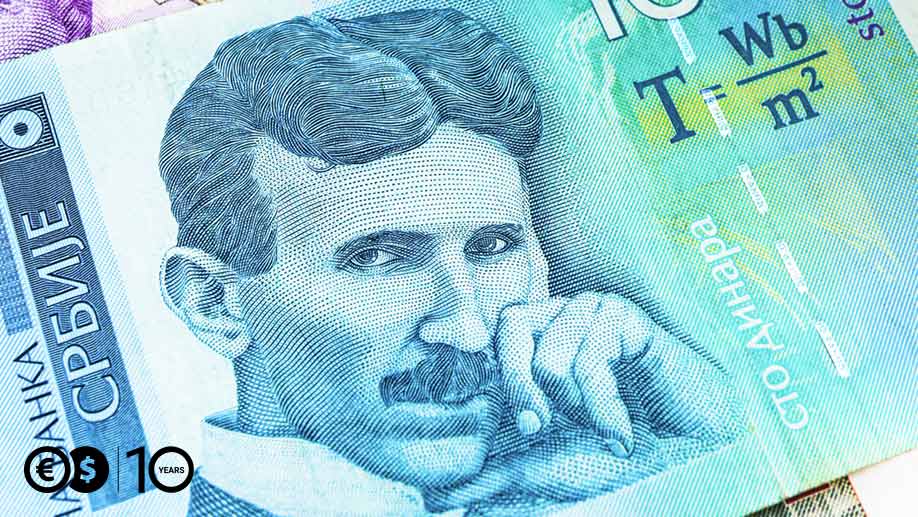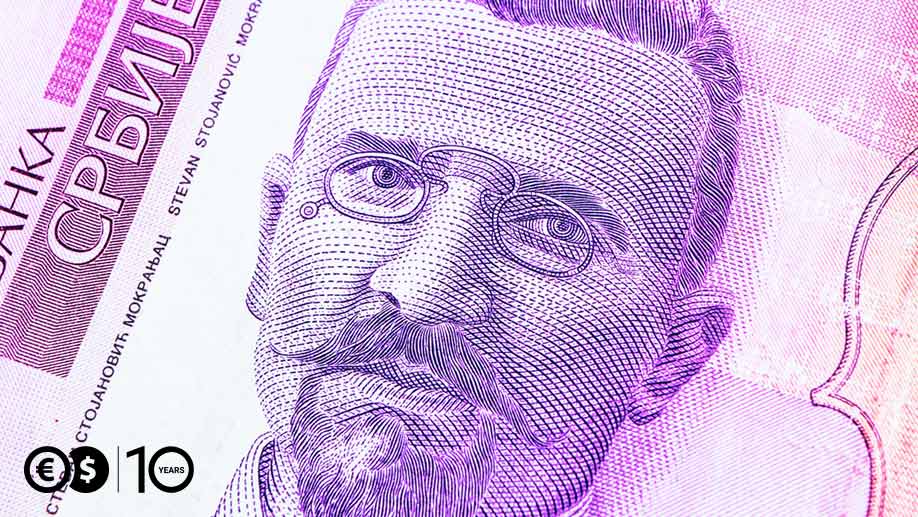It had disappeared and appeared in circulation several times, and its origins can be traced back to the 13th century. It is the official currency of Serbia, and part of its name comes from the Ottoman Empire. The Serbian dinar, a currency more widely known in southern Europe, is of course in question.
Medieval dinar
First mentions of the Serbian dinar can be found in chronicles dating as far back as 1214, written during the reign of Stefan Nemanic, also called Stefan the First-Crowned. Those coins were minted mainly in silver.
The Serbian dinar, like most coins from medieval Southern Europe, was inspired by the Venetian grosso, which was expressed, among others, by Latin inscriptions. However, the word "Dux" was replaced by the name "Rex."
The Serbian state of that time did not complain about the silver deposits. Numerous mines were operating in the country to extract this raw material. Therefore, silver coins, specifically the Serbian dinars, quickly became the main export product of medieval Serbia.
The scale of production of silver coins based on Venetian equivalents was so large that Dante Alighieri, an Italian poet, known primarily for his "Divine Comedy," placed the Serbian king in one of the circles of hell in his work, calling him a "forger." Silver Serbian dinars were minted until the fall of Stefan Lazarewicz's rule in 1459.
The complicated history of the Serbian dinar

Dinar was not used in modern Serbia for several centuries. This area remained under the control of the Ottoman Empire. Several other types of coins had been in circulation since it was the Ottomans who controlled the mints in Novo Brdo, Kucajna and Belgrade.
You can see the remains of that period even today. The present Serbian dinar is divided into 100 para. This term was given after the Turkish silver coin of the same name. In a free translation from Persian, a para simply means a coin or money.
The local people attempted to bring back their own money only after the Serbian Revolution in the early 19th century, during which they resisted the Ottoman reign. The result was a semi-independent Principality of Serbia, linked to the Ottoman Empire. At that time, many types of coins were in use in the area. Prince Milos Obrenović, who declared himself a hereditary monarch, decided to set exchange rates based on the groat. It included as many as 10 gold, 28 silver and 5 copper coins.
The order of minting their own national coins was not issued until 1867 by Mihailo Obrenović after the Ottoman army had completely left the country. As a result, the first bronze coins of values of 1, 5 and 10 para appeared in circulation in 1868. They contained an image of the ruler, Mihailo Obrenović III.
Silver coins worth 50 para and 1 and 2 dinars were also introduced in 1875. In 1879, they were also accompanied by a 5-dinar coin. In the same year, gold coins with the value of 20 dinars entered into circulation. For the matter of convenience, three years later, 10-dinars were also minted from gold. Moreover, in 1883, the issue of coins made of copper-nickel with values of 5, 10 and 20 para began. In 1904 a bronze coin with the value of 2 para was also distributed.
During the same period, the first 1, 5, 10, 50 and 100 dinar banknotes were also issued. Between 1873 and 1894, the rate of the Serbian dinar was closely linked to the French franc.
However, the Serbian dinar had not been in use for very long. In 1920, it was replaced by a Yugoslav dinar. Local people also traded in the Yugoslav krone.
The Serbian dinar once again replaced Yugoslavian one in 1941, during the German occupation. Its rate was strictly associated with the Reichsmark. At that time, 250 dinars had to be paid for 1 mark. However, this currency was removed from circulation in 1944. The Yugoslavian partisans replaced it again with the Yugoslav dinar, which was worth 20 Serbian dinars.
The Yugoslav dinar was in use until 2006 when Montenegro declared its independence. It was then that Serbia decided to return to its original currency, the Serbian dinar, which is still valid today.
Serbian dinar — coins and banknotes

The present-day Serbian dinar is divided into 100 para, just as it used to be. However, due to the currency's low value, these coins were withdrawn from circulation as early as 2008. Currently, the Serbian citizens use the denominations 1, 2, 5, 10 and 20 dinars. Nevertheless, 10-dinar coins are rarely used as a result of the more popular banknote of the same denomination.
The coins depict, depending on the denomination, the buildings of monasteries, universities and also the National Bank of Serbia. On the obverse of the 20-dinar coin, there are portraits of famous personalities. Depending on the date of production of the currency, it can be Nikola Tesla, Dimitrij Obradović, Milutin Milanković, Đorđe Vajfert, Mihajlo Pupin or Ivo Andrić. Each coin on the reverse side shows the Coat of arms of Serbia or the national bank logo as well.
The Serbian dinar includes banknotes of quite large denominations: 10, 20, 50, 100, 200, 500, 1000, 2000, and 5000 dinars, although the last one is significantly less used. Their obverses contain images of national personalities, including Nikola Tesla as mentioned earlier.
A trip to Serbia — which currency to take and how to pay on the spot
The official currency of Serbia is, of course, the Serbian dinar with the international designation RSD. This is the currency we should take with us on a journey to this country. You can check the current rate of the Serbian dinar at Conotoxia.com.
The buying and selling of Serbian dinars can be difficult, as it is not exactly a currency among the most common ones. However, the exchange of a Serbian dinar can be successfully carried out at Conotoxia.com, while benefiting from an attractive exchange rate.
In Serbia, you can pay both in cash and with a payment card. Cards issued by Visa and Mastercard are generally accepted. In the vast majority of hotels and large shops, payment by credit card is possible as well. ATMs are easy to find in Serbia. You can use them both in larger and smaller towns.
Before leaving, you should better make sure that your bank has a payment card that will operate in Serbia. The solution to the problem can be a multi-currency card that works all over the world. Such a card will soon appear on Conotoxia.com offer.



